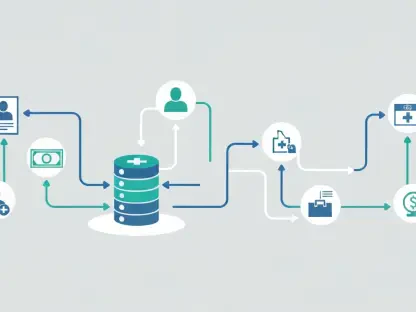Virtual prototyping is transforming industries across the board, but its impact on the mobility sector, particularly the automotive industry, is redefining the way vehicles are designed, tested, and brought to market. By simulating real-world conditions efficiently and effectively, virtual prototyping extends beyond cost savings and operational efficiency, touching aspects like innovation, sustainability, and even human-centric design. This article delves into these often-overlooked benefits, uncovering the comprehensive advantages that virtual prototyping brings to the table and how it is paving the way for future advancements.
Cost Savings and Increased Efficiency
Virtual prototyping shines brightest in its ability to save costs and time across the design and manufacturing processes. By identifying potential design flaws early on, companies can avoid the substantial expenses of producing flawed physical prototypes. The ability to iterate design quickly and efficiently accelerates validation cycles from components to entire manufacturing processes. This efficiency is crucial in an industry where rapid development can spell the difference between market success and failure.Accelerated design iterations also mean faster time-to-market for new vehicles. This speed is critical in an industry where consumer preferences and technological advancements are continually evolving. By leveraging virtual simulations, engineers can explore multiple design variants and test scenarios, pushing the boundaries of automotive ingenuity without the prohibitive costs typically involved in such an exploratory process. The faster iteration cycle helps companies stay ahead of competitors, ensuring that new innovations can be brought to market in a timelier manner.Moreover, the reduction in costs associated with the physical prototyping process cannot be overstated. Building physical prototypes can be incredibly expensive and time-consuming. Virtual prototyping slashes these expenses by allowing most of the design validation to take place in a simulated environment. This shift not only saves money but also frees up resources that can be redirected towards further research and development activities, making the entire process more agile and efficient.
Enhanced Innovation and Product Reliability
Virtual prototyping allows for an unprecedented level of experimentation and innovation. Engineers can test a wide array of design variables in a risk-free virtual environment. This freedom to experiment fosters creativity and pushes the limits of what is possible in vehicle design, leading to more advanced and groundbreaking products coming to market. The ability to simulate and tweak designs quickly encourages a culture of innovation and rapid problem-solving, both of which are essential in today’s fast-paced automotive industry.Furthermore, the reliability of the final product is significantly enhanced through extensive virtual testing. Virtual prototypes can undergo rigorous real-world condition simulations, ensuring that potential risks are identified and mitigated before reaching the physical testing phase. This not only leads to higher predictability but also elevates the safety and reliability of the final product, providing superior end-user satisfaction. Customers benefit from higher-quality products that have been thoroughly vetted through exhaustive virtual testing, reducing the likelihood of defects and recalls.The iterative nature of virtual prototyping also allows for a more dynamic approach to design. Engineers can make modifications on the fly based on ongoing test results, fine-tuning each aspect of the vehicle to perfection. This adaptability results in superior end products that meet or exceed industry standards for safety, performance, and efficiency. Enhanced reliability is a significant competitive advantage, as it builds consumer trust and loyalty, both of which are critical for long-term success in the automotive market.
Frontloading in the Design Process
One of the strategic advantages of virtual prototyping is the ability to frontload design decisions, shifting the bulk of development work to the initial phases. This approach, known as “shifting left,” allows for comprehensive virtual simulations before any physical prototypes are developed. All critical decisions and design validations occur early, reducing the number of changes in the later, more costly phases. Early problem identification and resolution contribute significantly to streamlining the overall development timeline.The early identification of potential issues enables designers to address them promptly, contributing to smoother and more predictable project timelines. This not only saves time and resources but also minimizes the likelihood of late-stage design changes that could delay production and increase costs. The clear roadmap established by early validation phases reduces uncertainties and fosters a more organized and efficient workflow, benefiting all stakeholders involved.Additionally, frontloading facilitates a more integrated and interdisciplinary approach to vehicle design. By bringing together various engineering domains early in the development process, virtual prototyping promotes cross-functional collaboration. This ensures that mechanical, electrical, thermal, and hydraulic systems are all harmoniously integrated from the outset, leading to more holistic and innovative vehicle designs. The seamless interaction between different domains enhances the overall quality and performance of the final product, setting a new standard for automotive excellence.
Enhanced Communication and Collaboration
Successful large-scale projects in the mobility sector require effective communication and collaboration, which can often be hindered by disparate teams using varied analysis tools. Virtual prototyping solves this problem by creating a unified toolchain that encompasses multiple domains, such as mechanical, hydraulic, electronics, and thermal systems. This unified approach ensures that all team members work with a single version of reality, enhancing coordination and reducing misunderstandings. A synchronized toolchain eliminates data silos, fostering a collaborative environment where multidisciplinary teams can work seamlessly together.Moreover, integrating virtual reality (VR) into virtual prototyping provides a more immersive experience for users. This goes beyond mere visualization, allowing users to simulate manual tasks and refine collaboration and decision-making skills. VR-enhanced prototyping can simulate assembly processes, ensuring that human factors are considered in design decisions, ultimately leading to better and safer products. By immersing engineers, designers, and other stakeholders in a virtual environment, VR enriches the collaborative experience and improves decision-making processes.Communication is further streamlined through enhanced visualization and interaction with virtual prototypes. Team members can interact with the prototype in real-time, identify potential issues, and propose solutions collectively. This real-time collaboration shortens the feedback loop and accelerates the decision-making process, ensuring that project timelines are adhered to more effectively. Enhanced communication and collaboration are crucial in managing the complexities of modern automotive development projects, ensuring that all team members are aligned and working towards a common goal.
Sustainability and Environmental Impact
One of the less obvious but profoundly impactful advantages of virtual prototyping is its contribution to sustainability. In the context of electric vehicles (EVs), virtual prototyping aids in extending battery life by predicting degradation and facilitating second-life applications. EV batteries, after their primary use, can be repurposed for home energy storage or smaller vehicles, contributing to a circular economy. By maximizing the lifecycle of critical components like batteries, virtual prototyping supports environmentally friendly practices that align with global sustainability goals.Creating digital twins of batteries helps in predicting their performance and planning for recycling and repurposing. This supports higher recovery rates of essential minerals and promotes sustainable practices, aligning with global environmental goals. The ability to repurpose and recycle components effectively can also open up new revenue streams and reduce the overall environmental footprint of the automotive industry. Digital twins provide invaluable insights that facilitate better decision-making regarding the lifecycle management of automotive components.The environmental benefits extend beyond batteries to other vehicle components as well. Virtual prototyping helps engineers design more efficient and lightweight parts, reducing overall vehicle emissions and improving fuel efficiency. Sustainability considerations can be integrated into the design phase, ensuring that each component is optimized for minimal environmental impact. This proactive approach to sustainability not only benefits the planet but also enhances the brand image of automotive companies, making them more appealing to eco-conscious consumers.
Integration with Artificial Intelligence
Artificial Intelligence (AI) is poised to further elevate the advantages of virtual prototyping in the mobility sector. Integrating AI into virtual simulations enhances the accuracy and realism of prototypes, enabling more precise predictive modeling. AI can process vast amounts of data from real-world performance tests and artificial scenarios, optimizing designs for better outcomes. The combination of AI and virtual prototyping leads to smarter, more intuitive design processes that can adapt to changing conditions and requirements in real-time.The synergy between AI and virtual prototyping also accelerates design cycles and enhances risk identification and mitigation. AI algorithms can pinpoint potential issues before they manifest in physical prototypes, saving time and resources while improving the overall quality of the final product. As AI technology continues to develop, its role in virtual prototyping will likely expand, offering even more sophisticated tools for the automotive industry. The enhanced predictive capabilities provided by AI ensure that virtual prototypes are as close to their real-world counterparts as possible.Moreover, AI-driven simulations can handle complex parameters and interactions that would be challenging for human engineers to manage alone. This leads to more accurate and comprehensive virtual prototypes that mimic real-world conditions with a high degree of fidelity. AI can also automate routine tasks, freeing up engineers to focus on more strategic and creative aspects of the design process. The integration of AI into virtual prototyping marks a new era of innovation and efficiency in the automotive industry.
Unified Toolchains and Collaborative Synergy
Virtual prototyping is revolutionizing various industries, especially the automotive sector. By efficiently simulating real-world conditions, this technology isn’t just about reducing costs and improving operational efficiency. It significantly impacts innovation, sustainability, and human-centric design. In the automotive industry, virtual prototyping is changing the way vehicles are conceptualized, tested, and brought to market.This technology allows for detailed simulations of how a vehicle will perform under different conditions, thereby minimizing the need for physical prototypes. This means quicker iterations, less material waste, and ultimately, a faster development cycle. Moreover, it opens up avenues for creative designs that may not have been feasible with traditional testing methods.Beyond practical benefits, virtual prototyping also addresses sustainability by reducing the environmental impact associated with the traditional prototyping process. It ensures that resources are used more efficiently and that designs are optimized for both performance and environmental impact.Additionally, virtual prototyping fosters human-centric design. By allowing engineers to test multiple scenarios and conditions, it helps create vehicles that better suit the needs and preferences of consumers. In essence, virtual prototyping is paving the way for future advancements and setting new standards in automotive development. Its comprehensive benefits extend well beyond the obvious, illustrating how deeply it influences innovation and sustainability in the mobility sector.









